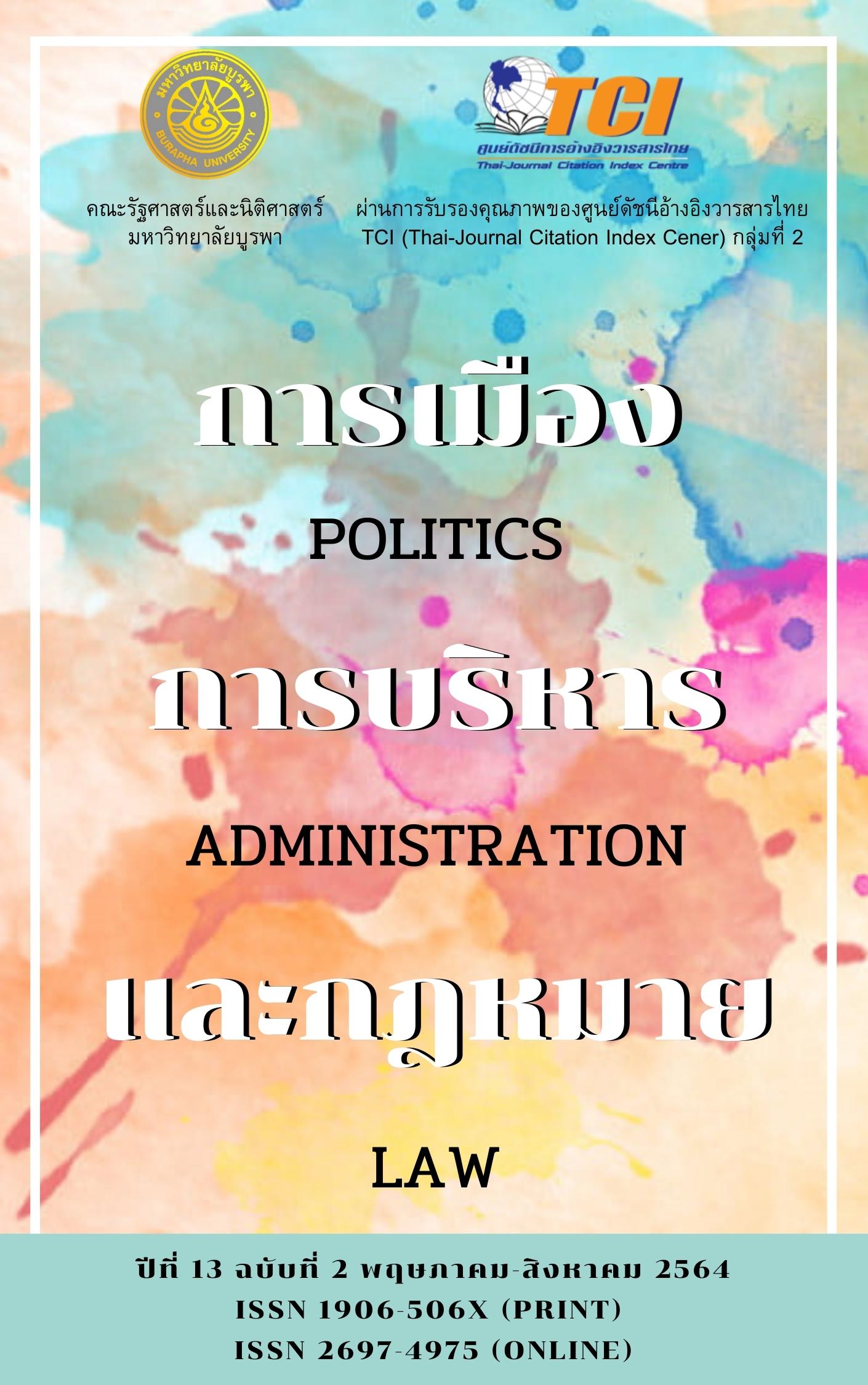โซเชียลแบงค์กิ้งในประเทศไทย
คำสำคัญ:
โซเชียลแบงค์กิ้ง, โซเชียลมีเดียแบงค์กิ้ง, อันดับโลจิสติกโมเดลบทคัดย่อ
การศึกษาเรื่องโซเชียลแบงค์กิ้งในประเทศไทยนั้น ได้ทำการศึกษาข้อมูลจากประชากรที่มีอายุตั้งแต่ 20 ปีขึ้นไป โดยจะต้องเป็นผู้ที่ใช้อินเตอร์เน็ตทุกวันอย่างน้อยวันละ 1 ชั่วโมง โดยมีจำนวนประชากรในการทำวิจัยครั้งนี้จำนวน 801 คน การศึกษาครั้งนี้ทดสอบสมมติฐานโดยใช้สถิติ Ordered Logistics Regression (OLR) เพราะตัวแปรตามมีการเรียงลำดับกัน ได้แก่ ระดับการยอมรับมาก (3) , ระดับการยอมรับปานกลาง (2) และระดับการยอมรับน้อย (1) โดยมี เพศ อายุ ระดับการศึกษา อาชีพ รายได้เฉลี่ยต่อเดือน เงินออมเฉลี่ยต่อเดือน เครื่องมือสื่อสังคมออนไลน์ที่ใช้มากที่สุด และค่าคะแนนความรู้ เป็นตัวแปรอิสระ และพบระดับนัยสำคัญเพียง 2 ตัวแปร คือ ระดับการศึกษาและค่าคะแนนความรู้ (SCORE) โดยหากมีค่าคะแนนความรู้เพิ่มมากขึ้นเพียง 1 คะแนน จะทำให้เกิดการยอมรับที่เพิ่มขึ้นถึง 0.241 หน่วย และอธิบายระดับการศึกษาได้ว่า การมีการศึกษาสูงกว่าระดับปริญญาตรีไม่มีระดับนัยสำคัญ แต่การเพิ่มขึ้นจากระดับต่ำกว่าปริญญาตรีไปสู่ระดับปริญญาตรีนั้น จะทำให้เกิดการยอมรับเพิ่มมากขึ้นถึง 0.820 หน่วย ซึ่งมีค่า R-Square ของ Cox & Snell สามารถอธิบายตัวแปรตามได้เท่ากับ 6.8% การสร้างแพลตฟอร์มให้เหมาะสมกับผู้ใช้งานทั้งในเรื่องของความสะดวกและง่ายต่อการเข้าถึงนั้น เป็นเรื่องที่เจ้าของธุรกิจที่เกี่ยวข้อง ควรให้ความสำคัญในการประชาสัมพันธ์และให้ความรู้ที่ถูกต้อง ซึ่งจะส่งผลให้โซเชียลแบงค์กิ้งได้รับความสนใจมากขึ้น และเนื่องจากในการศึกษาพบว่า ระดับการศึกษาและค่าคะแนนความรู้มีความสำคัญต่อการใช้โซเชียลแบงค์กิ้ง การวางแผนกลยุทธ์ทางการตลาดจึงควรที่จะเข้าถึงกลุ่มการศึกษาทุกระดับทั่วประเทศด้วย
เอกสารอ้างอิง
เกรียง กิจบำรุงรัตน์. (2013). ตัวแบบการถดถอยลอจีสติกเชิงอันดับสาหรับคณะวิชาและการวิเคราะห์เกรดนักศึกษา. Veridian E-Journal, 6(1), 869-873.
วสุธิดา นุริตมนต์ และทรงวิทย์ เจริญกิจธนลาภ. (2561). ปัจจัยที่มีอิทธิพลต่อการยอมรับเทคโนโลยี และความตั้งใจใช้บริการชำระเงินของผู้บริโภครุ่นใหม่ด้วยโปรแกรมประยุกต์คิวอาร์โค้ดผ่านโทรศัพท์เคลื่อนที่สมาร์ทโฟน. วารสารวิชาการนวัตกรรมสื่อสารสังคม, 6(2), 40-50.
Afolabi, I., Ezenwoke, A., & Ayo, C. (2017). Competitive analysis of social media data in the banking industry. International Journal of Internet Marketing and Advertising, 11(3), 183.
Danaiata, D. et al. (2015). Communication Management in Electronic Banking. Better Communication for Better Relationship. Procedia - Social and Behavioral Sciences, 124, 361-370.
Meadows, R. (2015). ASB extends profit boom. Retrieved November 22, 2020, from https://www.pressreader.com/new-zealand/the-press/20150212/281788512488967
Namahoot, K. S. (2018). การวิเคราะห์การยอมรับการใช้บริการธนาคารดิจิทัลโดยใช้ทฤษฎีการแพร่กระจายนวัตกรรม. วารสารพฤติกรรมศาสตร์, 24(2), 43-64.
Parusheva, S. (2017). Social Media Banking Models: a Case Study of а Practical Implementation in Banking Sector. Ikonomicheski Izsledvania, 3, 125-141
ดาวน์โหลด
เผยแพร่แล้ว
ฉบับ
ประเภทบทความ
สัญญาอนุญาต

อนุญาตภายใต้เงื่อนไข Creative Commons Attribution-NonCommercial-NoDerivatives 4.0 International License.






